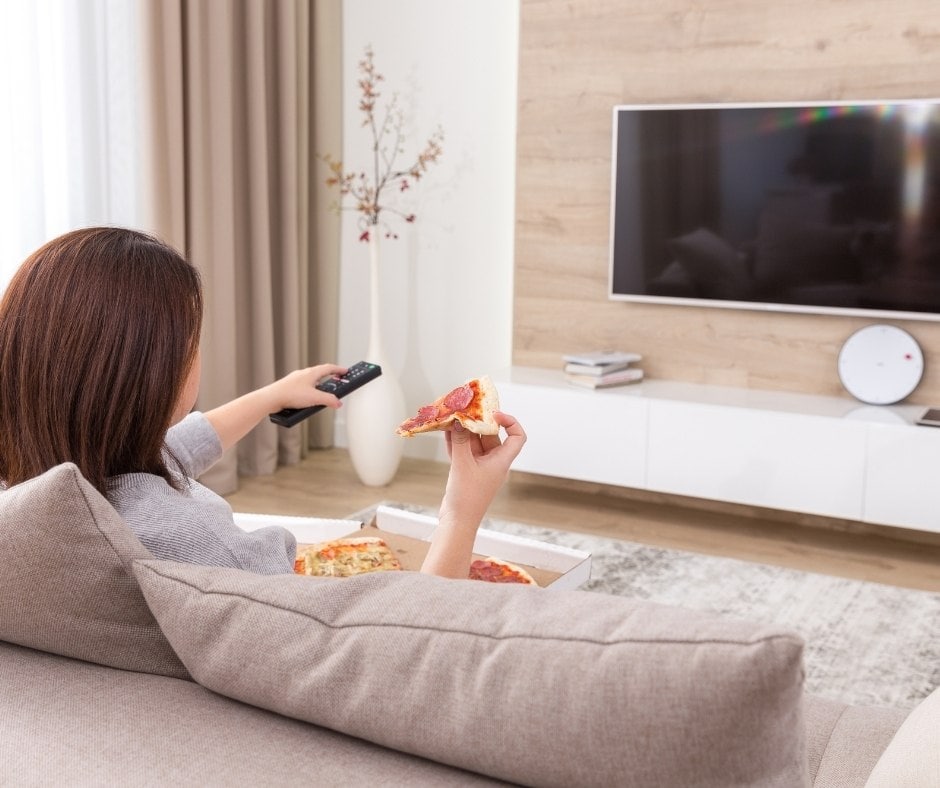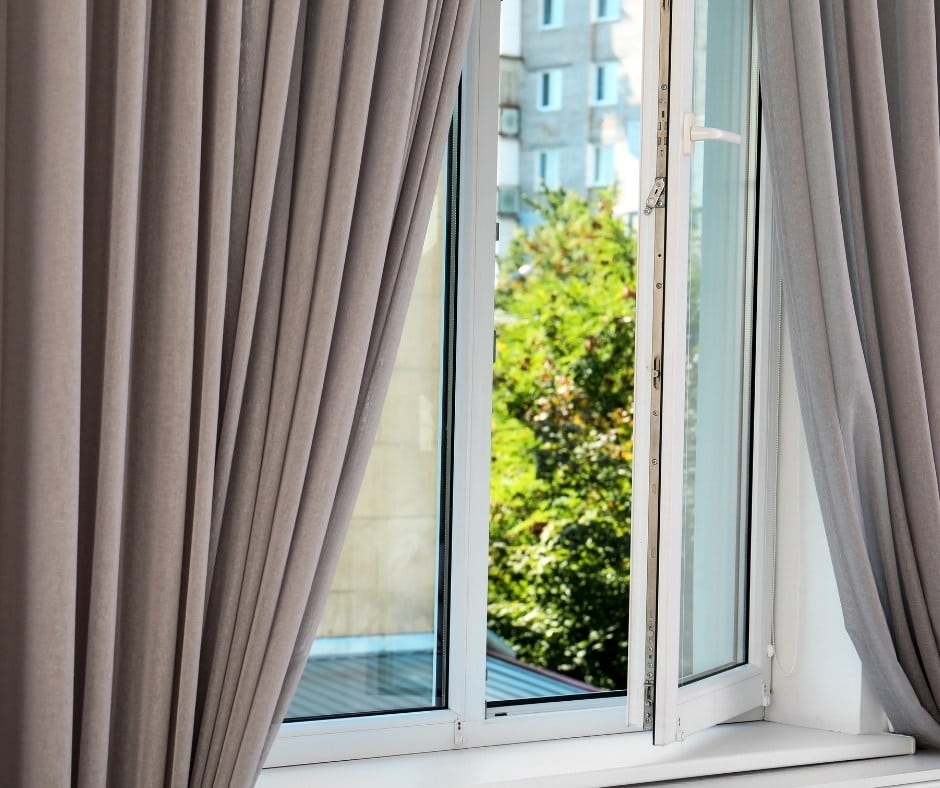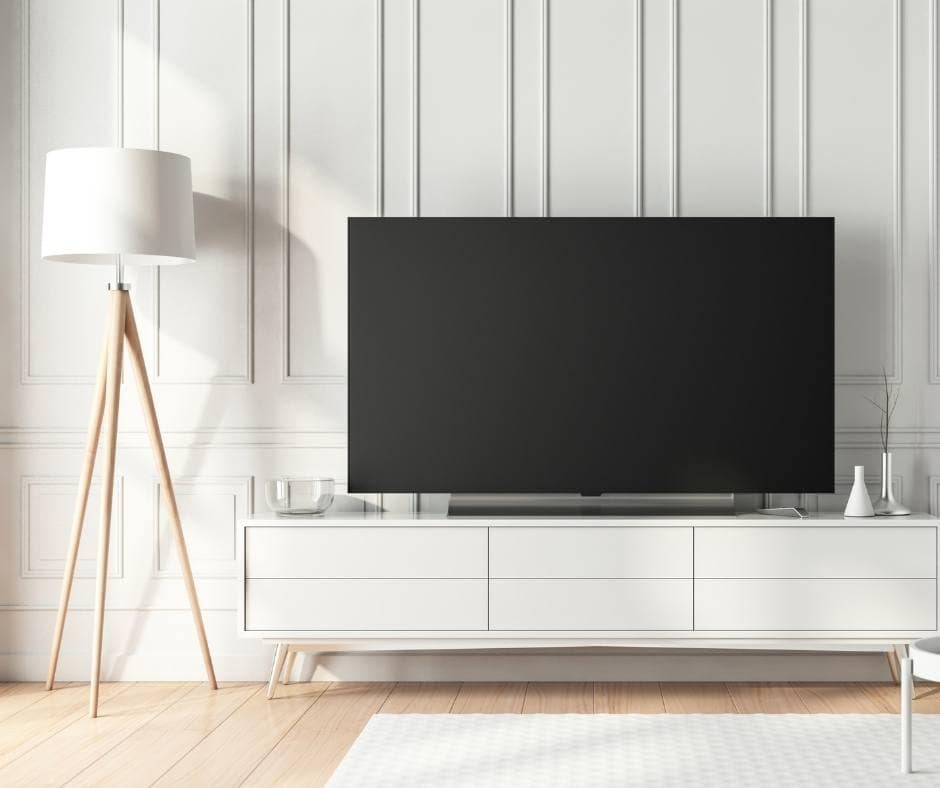Glare from sunlight in open windows can create a real hassle if you’re trying to watch television. Because of that, normally you would try to avoid placing a television near a window. If you have a lot of windows that get strong sunlight throughout the day that’s not always avoidable.
In addition to creating glare, sunlight will cause things to heat and fade. Both of those can cut time off the lifespan of your television.
There are ways to cut down on sunlight interfering with you watching your favorite show, and we shared them in this explainer. We hope that you find value in it.
In This Article We'll Discuss
Should you put a TV in front of a window?

The short answer is no, you shouldn’t put a television in front of a window. At the very least, you might create conflicts between the sunlight and the picture. At the very most, you might create conflicts between the sunlight and the picture, and you might damage your television.
In immediate terms, the issue is that sunlight can make it hard to see the television. If you place it in front of the window, whenever the sun shines directly in the window it might be right in your eyes. In that case, your choices are to choose times to watch it or close your shades. Or you can place it somewhere else, but even that risks creating glare.
Over time, sunlight can create serious performance problems with your television. If you place it in front of the window, the back case will absorb sunlight. Since most television cases are black, it’ll convert that sunlight to heat energy, which can damage the case.
Direct sunlight can also degrade the performance of the television itself. The ultraviolet rays break down the liquid molecules in LCD screens and cause them to dim and blur. WIndows block out a lot of UV rays, so it’ll happen over time.
Can sunlight damage the back of a TV?
Televisions are always black so they appear invisible while you are watching them at night. The same quality that makes them invisible in the dark, however, makes them vulnerable when the sun is shining.
Black absorbs light, which is why you can’t see it in the dark. All you can see is the picture. In the day, it will absorb any sunlight that shines on it. For the back, that is all of it.
When black absorbs light radiation, it changes it to heat. That’s why asphalt in the summer sun becomes painful to walk on.
If you heat plastic long enough, it can start to warp. It won’t happen fast. If you need a short-term solution, you’re probably safe. But over the long run, consistently heating the plastic case of your Tee Vee can damage the case.
Is it safe to put a TV in front of a window?
As vital as sunlight is for life on Earth, it’s not a good idea to put anything where it will get a lot of direct sunlight. The ultraviolet rays are bad for organic things and can cause anything synthetic to start breaking down. So, it’s not very safe to put a television in front of a window.
We’ll explain why.
The performance of televisions over the years has really elevated, from black-and-white units with rabbit-ear antennas to today’s high-definition LCD screens connected directly to Internet streaming services. They are also a lot more expensive, and also more vulnerable to direct sunlight.
There are two days that direct sunlight can damage a television: heat and ultraviolet rays.
Most television cases are black, which absorbs sunlight and can heat up quickly. The more black case you have receiving direct sunlight, the more it heats up.
Ultraviolet rays coming from the sun can cause LCD screens to lose sharpness and brightness. This happens when they cause the molecules that make up the liquid crystals to break down. It won’t happen in an afternoon, and you might even notice the decline in performance.
If you have high-quality glass between the sun and your television, you’ll cut down on the risk for damage but won’t eliminate it.
Ideas for how to put a TV in front of a window

If it’s impossible to place your television somewhere other than in front of a window or if the design of your room demands it, there are a few things you can do to reduce conflicts between the sun and your electronics.
The first and most obvious is smart placement. There is likely to be space above and below your windows. Since the sun shines at a downward angle, placing your television at the top of your windows will reduce glare the best. If you have high windows, placing your television beneath them is also a solution.
In both cases, remember to place your furniture so that the sun doesn’t shine in your eyes while you are watching television.
If you can’t place the television above or below the windows, you can use blinds. The problem is that we have windows so we can get lots of natural light. If your blinds are closed, you might as well have walls instead of windows. It is also likely to take away from your room design scheme, which undoubtedly uses that light.
A solution to that is to use blinds that match the color decor in your room, which probably softens the light rather than eliminate it. In a brightly lit room, a set of bamboo blinds might be a tasteful choice.
Another alternative is to use a window treatment to reduce incoming light. You can install a film over your windows — and you’ll want to treat all of them — to reduce glare and filter out even more UV rays.
Conclusion

Sunlight and televisions don’t go together very well. Direct sunlight can create serious glare problems that degrade the picture quality or even completely mask it. Strong direct sunlight can even damage television screens. So, best to avoid it if possible.
There are situations where it isn’t possible to avoid it, however. Rooms with lots of large windows might offer very little protected space to mount a television where at some point during the day it won’t be in the direct path of sunlight.
We offered a few suggestions here on how to minimize the conflict. We hope you find them valuable and if you do that you’ll consider sharing this article on social media. Or, leave us a comment. We love to hear from readers.

